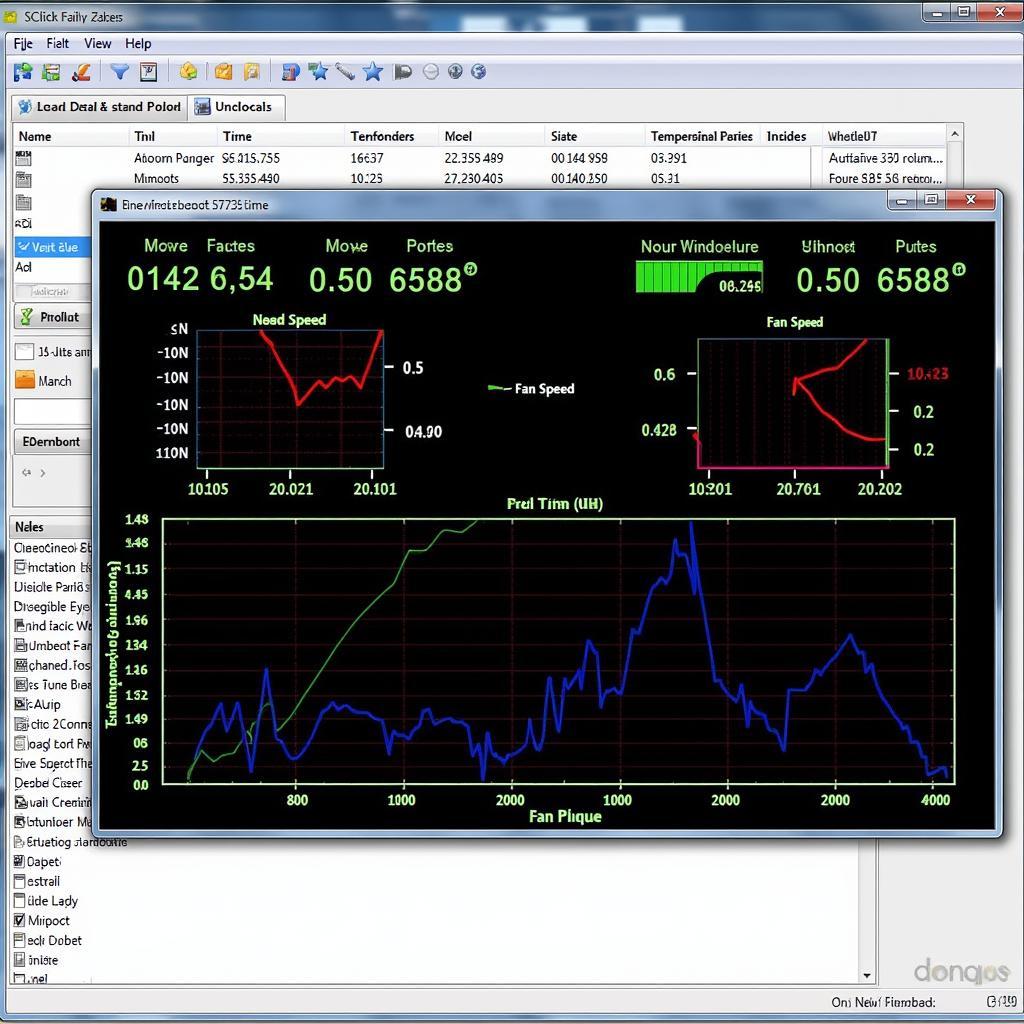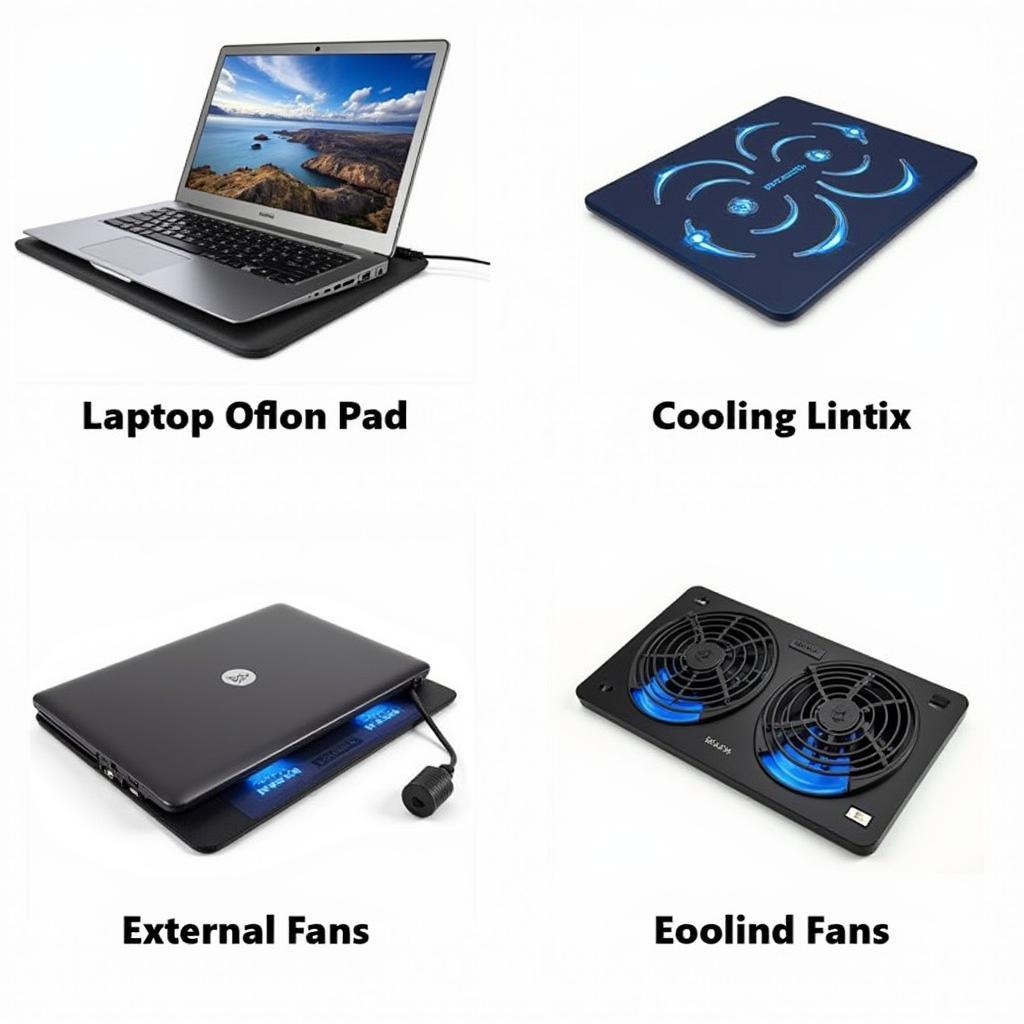Knowing how to Check Laptop Fan Speed is crucial for maintaining optimal performance and preventing overheating. A properly functioning fan keeps your system cool, ensuring smooth operation and extending the lifespan of your components. This guide will provide you with various methods to monitor and control your laptop’s fan speed, regardless of your technical expertise.
Why is Checking Laptop Fan Speed Important?
 Checking Laptop Fan Speed Importance
Checking Laptop Fan Speed Importance
Overheating is a common problem that can lead to significant performance issues, system crashes, and even permanent hardware damage. By regularly checking your laptop fan speed, you can identify potential problems early on and take preventative measures. For instance, a consistently high fan speed might indicate dust buildup, requiring a cleaning. Alternatively, a slow or non-functional fan could signal a more serious hardware issue needing professional attention. Monitoring fan speed also allows you to optimize your system’s cooling performance, ensuring it runs efficiently even under heavy loads.
Methods to Check Laptop Fan Speed
There are several ways to check laptop fan speed, ranging from built-in system tools to third-party software. Choosing the right method depends on your specific needs and technical comfort level.
Using BIOS/UEFI
Most modern laptops provide fan speed information within the BIOS/UEFI settings. Accessing the BIOS/UEFI varies depending on the manufacturer, but it usually involves pressing a specific key (e.g., F2, F10, Del) during startup. Once inside, look for the “Hardware Monitor” or “PC Health Status” section. Here, you should find details about your fan speed, temperature, and other system parameters.
Utilizing System Information Tools
Windows and macOS offer built-in system information tools that can sometimes display fan speed. In Windows, you can try using the “Performance Monitor” or the “System Information” app. However, these tools may not always provide fan speed data depending on your laptop model and drivers. On macOS, you can use the “System Information” utility to access hardware details, which might include fan speed.
Employing Third-Party Software
 Third-Party Software for Fan Speed Monitoring
Third-Party Software for Fan Speed Monitoring
Numerous third-party applications are specifically designed to monitor hardware performance, including fan speed. Popular options include SpeedFan, HWMonitor, and NoteBook FanControl. These tools provide real-time monitoring and often allow for custom fan curves, enabling you to adjust fan speed based on temperature thresholds. check laptop fan speed online. These software solutions offer a more comprehensive and user-friendly approach compared to built-in system tools.
Troubleshooting Fan Issues
If you notice your fan is constantly running at high speed or not functioning correctly, there are a few troubleshooting steps you can take.
- Clean the vents and fans: Dust accumulation can restrict airflow and cause overheating. Use compressed air to carefully clean the vents and fan blades.
- Update drivers: Outdated or corrupted drivers can sometimes affect fan performance. Ensure your BIOS and chipset drivers are up-to-date. check cpu speed fan on laptop.
- Check for physical obstructions: Make sure nothing is blocking the airflow around your laptop.
- Reapply thermal paste: Over time, thermal paste can dry out, reducing its effectiveness in transferring heat away from the CPU. Reapplying thermal paste can significantly improve cooling. check speed fan laptop.
Expert Insight: John Smith, a seasoned computer technician, advises, “Regularly monitoring your laptop’s fan speed is like checking your car’s oil. It’s a simple preventative measure that can save you from costly repairs down the road.”
Conclusion
Learning how to check laptop fan speed is a valuable skill for any laptop user. By regularly monitoring and addressing any potential issues, you can ensure your laptop runs smoothly, stays cool, and enjoys a longer lifespan. Utilizing the methods outlined in this guide, you can take control of your laptop’s thermal management and avoid the pitfalls of overheating. check fan speed dell laptop. Remember, preventative maintenance is key to optimal performance.
Expert Insight: Jane Doe, a hardware engineer, emphasizes, “Don’t ignore a noisy fan. It’s often the first sign of a developing thermal problem that could lead to serious damage if left unchecked.”
 Laptop Cooling Solutions
Laptop Cooling Solutions
Need help with your laptop fan? Contact us at Phone: 0903426737, Email: fansbongda@gmail.com, or visit us at Address: Tổ 9, Khu 6, Phường Giếng Đáy, Thành Phố Hạ Long, Giếng Đáy, Hạ Long, Quảng Ninh, Việt Nam. We have a 24/7 customer support team.


